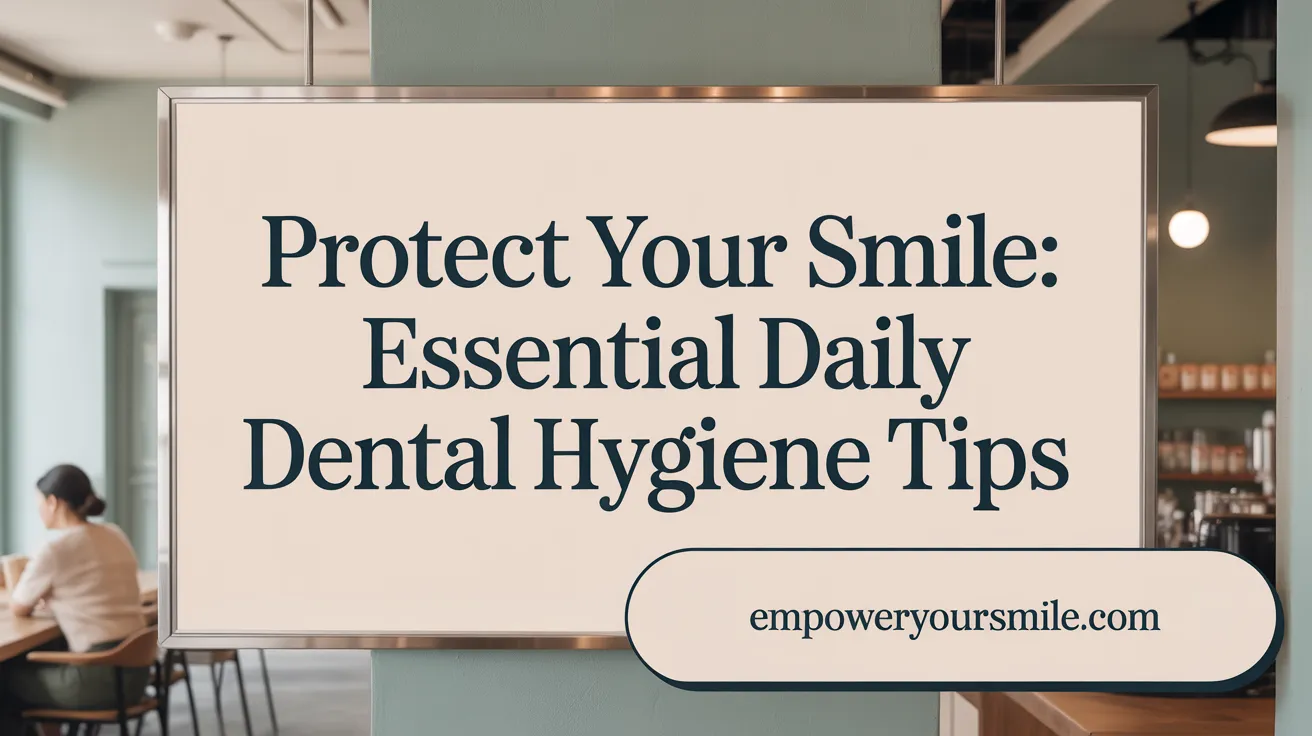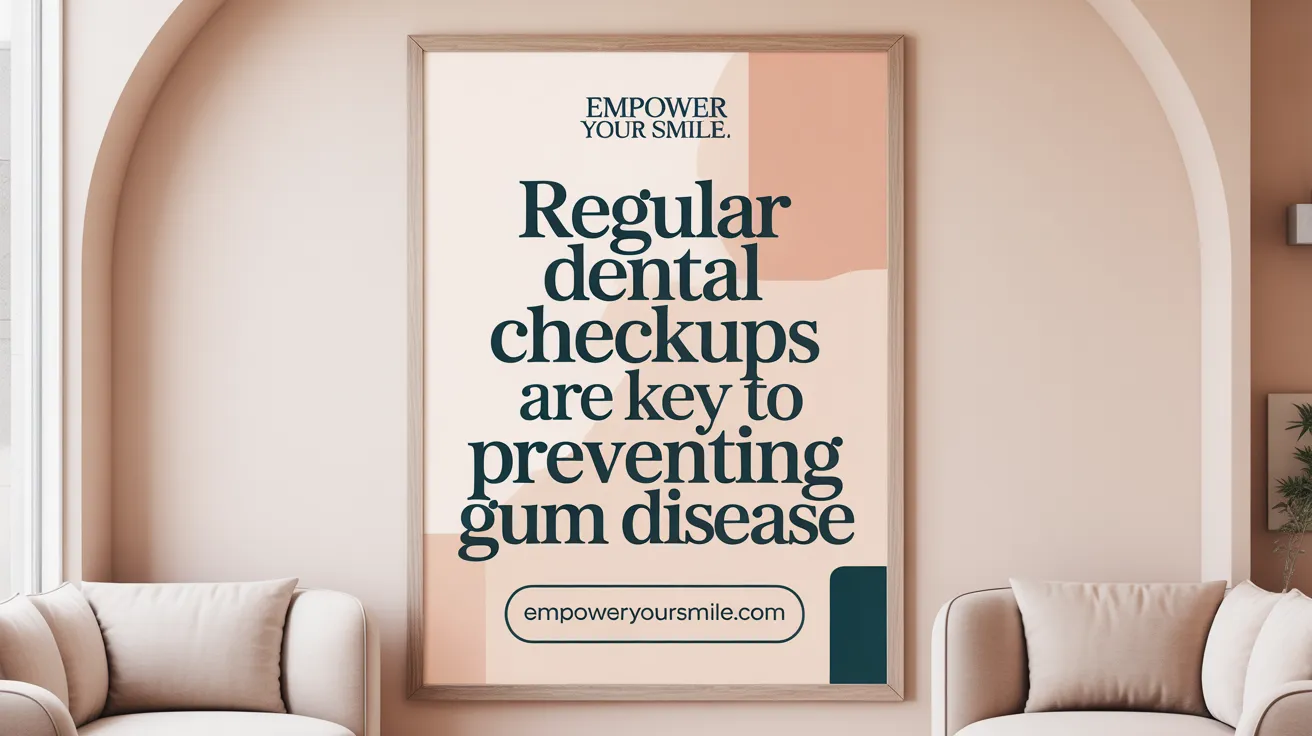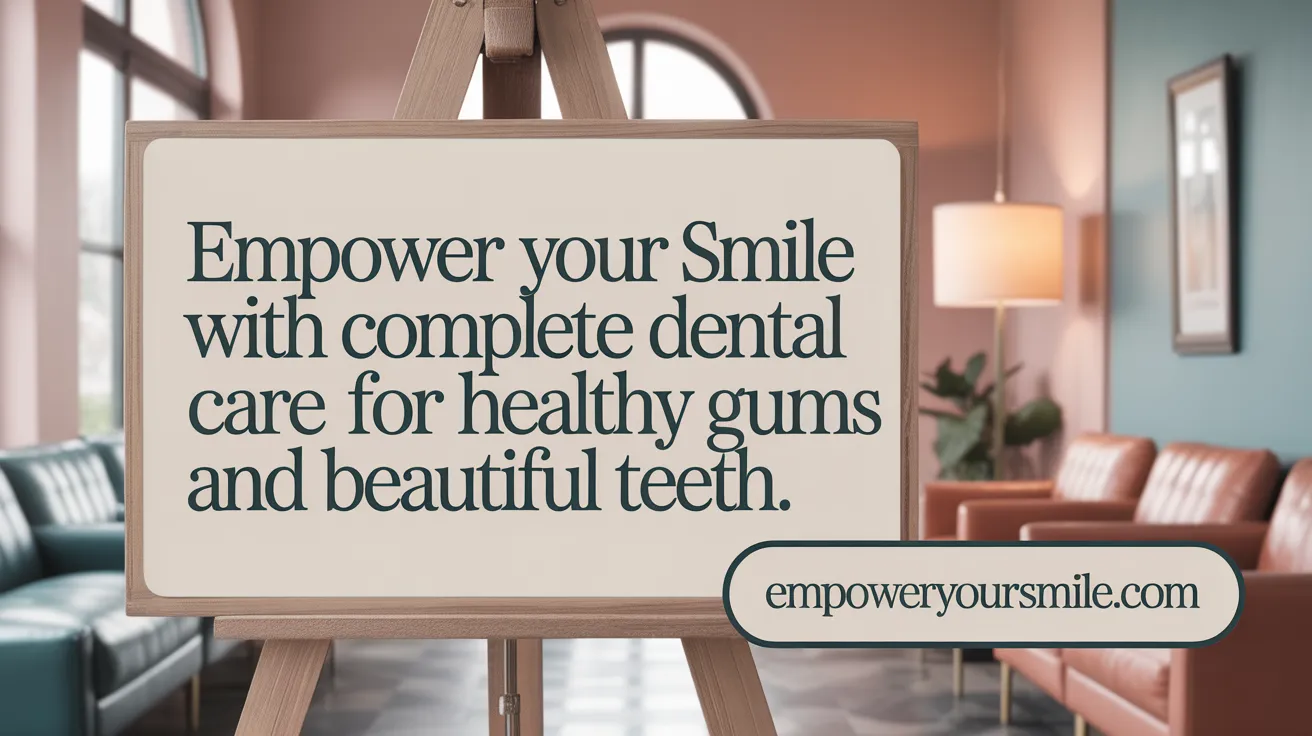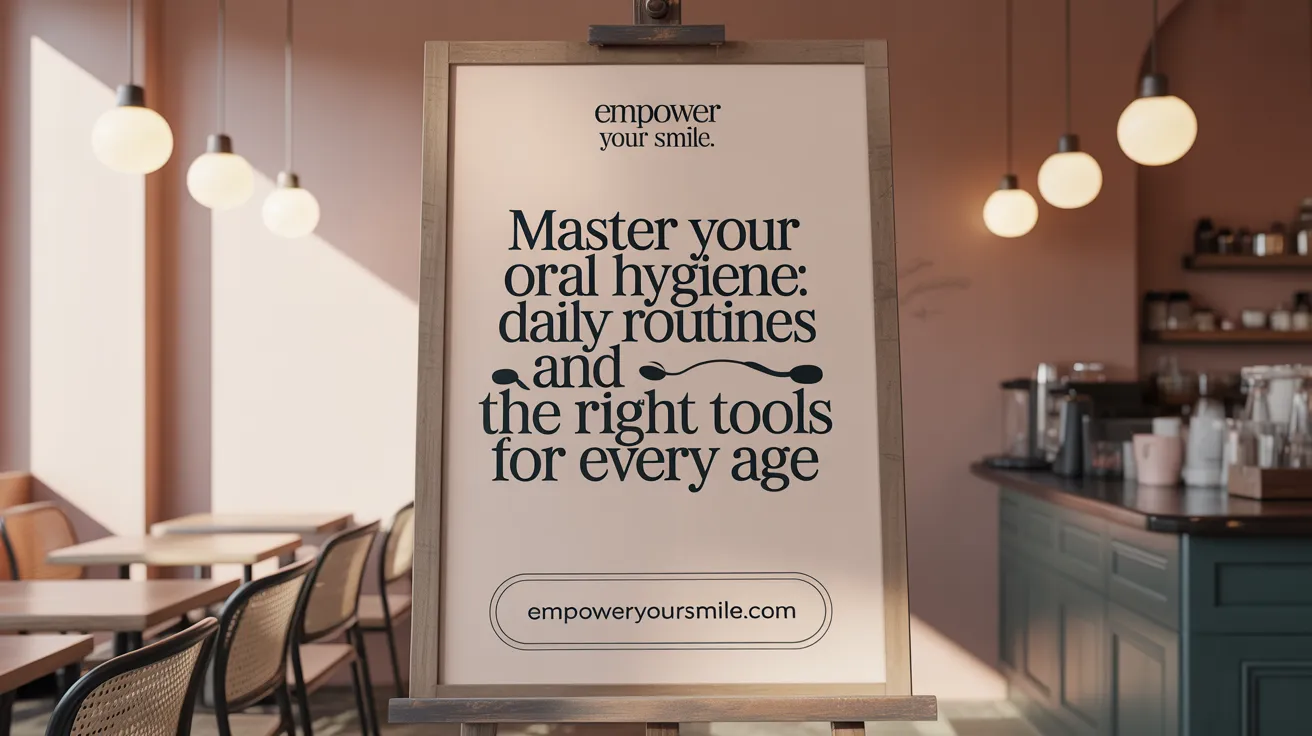Introduction to the Importance of Daily Dental Care
The importance of daily oral hygiene cannot be overstated.
Maintaining a consistent routine of brushing at least twice daily with fluoride toothpaste and flossing helps remove plaque, a sticky bacterial film that causes tooth decay and gum disease. Good oral care prevents not only cavities but also gum diseases such as gingivitis and periodontitis, the latter being a leading cause of tooth loss.
Oral health is deeply connected to overall health.
Poor dental hygiene may increase risks for serious conditions including cardiovascular disease, respiratory infections like pneumonia, diabetes complications, and pregnancy-related problems. Bacteria from inflamed gums can enter the bloodstream, potentially affecting other organs and contributing to systemic inflammation.
Gum disease is widespread and impactful.
Nearly 47% of adults over 30 experience some form of periodontal disease, which can lead to symptoms like bleeding gums, bad breath, and even tooth loss. It also contributes to reduced quality of life and can complicate management of chronic illnesses. Regular dental checkups and proper home care are essential to detect and manage these issues early, ensuring long-term oral and overall health.
Fundamentals of Daily Dental Hygiene and Gum Disease Prevention

What type of daily oral hygiene practices help prevent gum disease?
Brushing your teeth at least twice daily is a cornerstone of good oral hygiene. Use a soft-bristled toothbrush along with fluoride toothpaste, holding the brush at a 45-degree angle to the gums. Gentle circular motions not only clean tooth surfaces but also massage gums to maintain their health. This method helps remove plaque, the sticky bacterial film responsible for gum irritation.
Daily flossing or interdental cleaning complements brushing by targeting plaque and debris trapped between teeth, areas a toothbrush cannot reach. About 18 inches of floss is recommended, wrapping it in a C-shape around each tooth to clean below the gum line effectively. Water flossers for plaque removal can be a useful alternative, especially for those with braces or implants.
Incorporating an antimicrobial mouthwash, preferably alcohol-free and bearing the ADA Seal of Acceptance, can further reduce harmful bacteria and prevent plaque buildup. Mouthwash is most effective when used before brushing.
To maintain efficiency, replace your toothbrush every three to four months or sooner if bristles become frayed. Worn brushes fail to clean adequately and may damage gums.
Healthy diet for oral health plays a pivotal role in oral health. Limiting sugary and acidic foods and drinks reduces the bacteria's food source that leads to plaque and gum disease. Instead, eat a balanced diet rich in fruits, vegetables, lean proteins, and calcium, supporting gum tissue strength and overall oral health.
Avoiding tobacco use is critical, as smoking and other tobacco use significantly increase the risk and severity of gum disease. Tobacco impairs immune response and healing, and quitting smoking can considerably improve gum health.
Maintaining this daily routine of oral hygiene practices — including brushing, flossing, mouthwash use, dietary care, and avoiding tobacco — effectively prevents gum disease and supports your oral health and overall wellness.
Understanding Gum Disease: Causes, Symptoms, and Risks

What causes gum disease and how do plaque and tartar contribute?
Gum disease begins with plaque, a sticky, colorless film of bacteria that forms daily on teeth. If not removed by regular oral hygiene practices such as brushing and flossing, plaque hardens into tartar (calculus), which irritates the gums and encourages bacterial growth. Tartar must be removed professionally to prevent gum inflammation.
What are the stages of gum disease?
Gum disease develops in stages:
- Gingivitis: The early, mild, and reversible stage with symptoms like red, swollen, and bleeding gums due to inflammation. Learn more about gingivitis.
- Periodontitis: An advanced, chronic stage where infection destroys tissues and bone supporting the teeth, leading to gum recession, loose teeth, and possible tooth loss. For more details, see periodontitis overview.
What risk factors increase susceptibility to gum disease?
Multiple factors contribute to gum disease, including:
- Genetics: Some are more prone due to family history.
- Diabetes: Poorly controlled diabetes worsens gum infections; see oral health and diabetes.
- Tobacco use: Smoking and other tobacco products exacerbate gum inflammation and reduce healing; understand tobacco and gum disease risks.
- Hormonal changes: Pregnancy, menstruation, menopause, and puberty can increase gum sensitivity; visit pregnancy and oral health.
- Other factors: Stress, medications reducing saliva, and poor oral hygiene.
What are the early signs of gum disease?
Early symptoms to watch for are:
- Bleeding gums during brushing or flossing.
- Persistent bad breath.
- Swollen, tender, or red gums.
- Gums that recede or pull away from teeth.
- Loose or sensitive teeth.
More information on signs and symptoms of gum disease can help you identify early issues.
How does gum disease affect overall health?
Gum disease is linked with systemic health problems, including:
- Increased risk of cardiovascular diseases (like heart attack and stroke).
- Complications in diabetes management.
- Pregnancy complications such as low birth weight and premature delivery.
- Respiratory illnesses like pneumonia; see the oral bacteria impact on respiratory health.
- Higher likelihood of certain cancers.
Maintaining good oral hygiene and regular dental checkups are critical to preventing gum disease and protecting overall health.
The Essential Role of Routine Professional Dental Care

How does regular dental care support gum disease prevention and management?
Routine dental visits, generally scheduled every six months or more frequently based on individual needs, are vital for maintaining healthy gums. These checkups allow dentists to identify early signs of gum inflammation and periodontal disease before they worsen.
Professional cleanings during these visits effectively remove plaque and tartar buildup that cannot be eliminated through everyday brushing and flossing. This removal disrupts bacterial colonies responsible for gum infection and inflammation.
Advanced diagnostic tools aid in thorough assessment. Digital x-rays reveal bone loss and other hidden issues, while periodontal probing measures gum pocket depths to evaluate disease severity. Early detection through such measures enables timely interventions.
For patients with established gum disease, specialized treatments like scaling and root planing—often referred to as deep cleanings—are performed. These procedures target bacteria beneath the gum line, smoothing root surfaces to promote healing and gum reattachment.
If necessary, further treatments including antibiotics, laser therapy, or surgery may be employed to manage advanced conditions.
Early intervention significantly improves clinical outcomes, reducing the risk of tooth loosening and loss while also mitigating related systemic health risks linked to periodontal disease.
Thus, regular professional dental care is indispensable for effective gum disease prevention and management, supporting both oral and overall health.
Empower Your Smile: Comprehensive Dental Services for Gum Health and Aesthetics

What types of dental services does Empower Your Smile provide?
Empower Your Smile offers a comprehensive range of dental care options. These include routine cleanings and dental exams essential for maintaining gum health and early disease detection. They address emergencies and provide restorative treatments such as dental implants to replace missing teeth. The practice also specializes in periodontics, focusing on managing and treating gum disease. Cosmetic services like porcelain veneers and teeth whitening enhance the appearance of patients' smiles.
How does Empower Your Smile ensure a patient-centered and comfortable dental experience?
Patient comfort is a priority at Empower Your Smile. The team uses advanced dental technologies that increase treatment accuracy and efficiency, minimizing discomfort. Sedation dentistry is available to reduce anxiety during procedures, creating a calm and relaxed environment. Treatment plans are personalized to meet each individual’s health needs and preferences, ensuring a tailored and compassionate care experience.
What is the role of Dr. Moezinia and her team at Empower Your Smile?
Dr. Moezinia leads a dedicated team of dental specialists committed to providing advanced and thorough dental care. They oversee all treatments, integrating the latest techniques and technologies to optimize oral health outcomes. This leadership fosters a welcoming atmosphere where patient concerns are addressed with attention and expertise. Learn more about dental specialty teams.
How does Empower Your Smile integrate cosmetic and general dentistry under one roof?
Empower Your Smile uniquely combines general dentistry with cosmetic and periodontal care, allowing patients to receive complete dental services conveniently. This seamless integration means patients can manage preventive care, restorative treatments, and aesthetic improvements without the need to visit multiple specialists, promoting comprehensive oral health and saving time.
What aesthetic approaches does Empower Your Smile use to help patients achieve confident smiles?
The practice employs cutting-edge aesthetic dentistry methods. Porcelain veneers correct discoloration and cosmetic defects, providing natural-looking results. Dental implants serve as durable replacements for missing teeth, restoring function and appearance. Customized treatment plans, informed by advanced technology, ensure results that not only improve oral health but also boost patient confidence and satisfaction.
Diet, Lifestyle, and Their Impact on Gum Health

How do diet and lifestyle choices influence gum health?
A balanced diet plays a vital role in maintaining healthy gums and preventing gum disease. Consuming fruits and vegetables rich in vitamins and minerals, especially calcium and Vitamin C, supports the strength and healing of gum tissues. Calcium is essential for strong teeth and bones, while Vitamin C boosts the immune system and aids in repairing gum tissue.
Hydration is also critical in gum health. Adequate water intake promotes saliva production, which helps neutralize acids in the mouth, wash away food particles, and reduce harmful bacteria that contribute to plaque buildup and gum inflammation (healthy diet for oral health).
Tobacco use greatly increases the risk of gum disease by impairing immune response and slowing healing processes. Smokers are more prone to tartar formation and deeper gum pockets, which exacerbate periodontal problems. Quitting tobacco is a key strategy in reducing gum disease risk and improving oral health outcomes.
Hormonal changes during life stages such as pregnancy, menstruation, puberty, and menopause can increase gum sensitivity and susceptibility to inflammation. Women should maintain extra vigilance with oral hygiene during these periods to prevent gingivitis (pregnancy and oral health.
Systemic conditions like diabetes significantly influence gum health. Poorly controlled diabetes increases vulnerability to infections such as periodontal disease, while good management of blood sugar levels supports gum tissue health and reduces complications.
Together, thoughtful diet choices, lifestyle modifications like quitting tobacco, proper hydration, and managing systemic and hormonal factors create a supportive environment for gum health and reduce the risk of periodontal disease.
Effective Daily Oral Care Routines and Tools for All Ages

How to Brush Properly
Proper brushing is essential for maintaining healthy teeth and gums. Use a soft-bristled toothbrush with fluoride toothpaste, holding it at a 45-degree angle to the gums. Brush gently with small circular motions, covering all surfaces of each tooth. Brushing should last for at least two minutes twice daily to effectively remove plaque and prevent tooth decay and gum disease.
Methods for Cleaning Between Teeth
Removing plaque between teeth is crucial as toothbrushes cannot reach these areas. Daily flossing is recommended using about 18 inches of floss, wrapping it around each tooth in a "C" shape for thorough cleaning below the gumline. Alternatively, water flossers can be used, especially helpful for people with braces, implants, or limited dexterity. Both methods reduce plaque buildup and lower gum inflammation risk.
Role of Antimicrobial Mouthwash
Daily use of an alcohol-free antimicrobial mouthwash can help reduce harmful bacteria and plaque accumulation. Using mouthwash before brushing may maximize its effectiveness, freshen breath, and contribute to gum health. Products bearing the American Dental Association (ADA) Seal of Acceptance ensure safety and efficacy.
Special Considerations for Older Adults and Those with Limited Dexterity
Older adults may face challenges like arthritis or reduced manual dexterity. Electric toothbrushes and floss holders are effective alternatives that promote better cleaning with less effort. Maintaining regular dental visits and adaptive oral care routines supports periodontal health and helps prevent gum disease progression.
Tongue Cleaning and Toothbrush Maintenance
Brushing the tongue daily removes bacteria that cause bad breath and oral health problems. Replace toothbrushes every 3 to 4 months or sooner if bristles fray to maintain cleaning efficiency and avoid bacterial buildup. For guidelines, refer to brush replacement recommendations and tongue cleaning benefits.
By adhering to these tailored daily oral hygiene practices and using appropriate tools, individuals of all ages can effectively prevent gum disease and maintain oral health and overall wellness.
